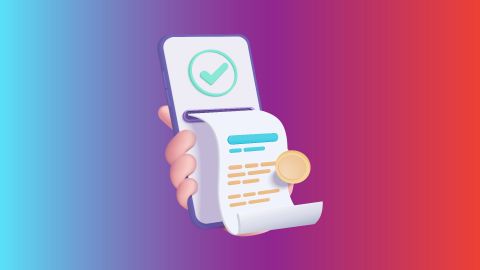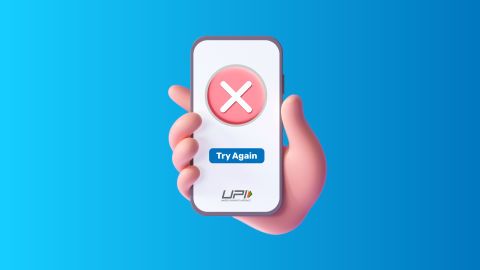Explore the essential principles of electric power, including its definition, calculation, and various applications. Learn how electric power impacts technology and daily life.
What is electricity?
-
Electric power is a fundamental concept in electrical engineering, describing the rate at which electrical energy is transferred or converted into other forms of energy. It plays a crucial role in modern life, powering homes, industries, and technologies. Electric power is generated in power plants and distributed through electrical grids to provide energy for lighting, heating, cooling, and running electronic devices. Its efficient use and management are vital for sustainable development and energy conservation.
Know about electric power
Electric power is the rate at which electrical energy is consumed, generated, or transferred in an electrical circuit. It is the product of voltage and current and represents how much energy is delivered per unit of time. Electric power is expressed in watts (W) and reflects the efficiency of electrical systems in performing work.
Formula for electric power
The formula for electric power depends on the components of the circuit:
1. General formula:
P = V* IWhere:P = Power (Watts, W)V = Voltage (Volts, V)I = Current (Amperes, A) 2. Using Ohm’s law:
Using Ohm’s Law (V = I \cdot R):P = I^2 * RorP = {V^2}\{R}Where:R = Resistance (Ohms, Ω)These formulas help calculate power based on different circuit parameters. Units of electric power
- Watt (W): Basic unit of power. 1 W = 1 Joule/second.
- Kilowatt (kW): 1 kW = 1000 W, commonly used for household and industrial applications.
- Megawatt (MW): 1 MW = 1,000,000 W, used in large-scale power generation.
- Horsepower (HP): 1 HP ≈ 746 W, used in motors and engines.
- Kilowatt-hour (kWh): Energy unit denoting power consumption over time.
Electric power calculation methods
Parameter Formula Description Voltage and current P=V×IP=V×I Power is calculated as the product of voltage and current. Current and resistance P=I2×RP=I2×R Power is determined by current and resistance. Voltage and resistance P=V2RP=RV2 Power is derived from voltage and resistance. Example calculation:
If a 220V device draws 5A, the power is:
P = 220*times 5 = 1100WRelationship between voltage, current, and power
The relationship between voltage, current, and power is interconnected through Ohm’s Law:
- Power increases with both voltage and current.
- Current drawn depends on power and voltage.
- Voltage is determined by power and current.
Key points
1. Higher voltage reduces current for the same power, improving efficiency.
2. Power is maximised when both voltage and current are optimised.
3. Resistance affects the balance of voltage and current in circuits.
Solved examples of electric power
Example Given data Solution 1. Calculate power V=120 V,I=10 AV=120V,I=10A P=120×10=1200 WP=120×10=1200W 2. Using resistance I=5 A,R=8 ΩI=5A,R=8Ω P=52×8=200 WP=52×8=200W 3. Voltage and resistance V=240 V,R=60 ΩV=240V,R=60Ω P=240260=960 WP=602402=960W 4. Energy consumption P=2000 W,t=3 hP=2000W,t=3h E=P×t=2000×3=6000 WhE=P×t=2000×3= Applications of electric power
Electric power is crucial in various domains:
1. Residential use: Lighting, heating, cooling, and running appliances.
2. Industrial applications: Powers heavy machinery, production lines, and equipment.
3. Transportation: Drives electric trains, trams, and electric vehicles.
4. Communication: Powers data centres, telecommunication systems, and broadcasting.
5. Medical field: Essential for diagnostic devices like X-rays, MRIs, and ventilators.
Electric power ensures the seamless functioning of modern society, influencing every aspect of life.
Importance of electricity payment online
Paying your electricity bill online offers several benefits:- Convenience: Pay anytime from anywhere without visiting physical locations.
- Time-saving: Reduces waiting times associated with traditional payment methods.
- Secure transactions: Online platforms provide secure payment gateways, protecting customer data.
- Immediate confirmation: Users receive instant confirmation of payment, reducing billing disputes.
Steps to pay your electricity bill online on the Bajaj Finserv website
Paying the electricity bill through the Bajaj Finserv website is simple. Here are the steps:
1. Visit the Bajaj Finserv website
2. Navigate to the ‘PAYMENTS’ section and click on ‘PAY NOW’ under the ‘ELECTRICITY BILL’ option
3. Select your service provider from the list of power suppliers
4. Enter your ‘CUSTOMER ID’ and click on ‘FETCH YOUR BILL’
5. Verify the bill amount and click on ‘PAY NOW’
6. Pay using the multiple payment methods available such as Bajaj Pay UPI, debit card, credit card, net banking, and Bajaj Pay Wallet.
Post the transaction you will be receiving a confirmation to intimate about successful payment.
Fee and charges
A convenience fee of up to 2% will be charged depending on the transaction amount and payment mode (inclusive of applicable taxes). For more information on fees and charges, click here.
Note: For failed transactions, the total amount including charges except taxes are reversed.State-wise electricity payment
Recharge and Pay Bills
Mobile Prepaid
Mobile Postpaid
Broadband Bill Payment
Electricity Bill Payment
Bajaj Finserv App for All Your Financial Needs and Goals
Trusted by 50 million+ customers in India, Bajaj Finserv App is a one-stop solution for all your financial needs and goals.
You can use the Bajaj Finserv App to:
You can use the Bajaj Finserv App to:
- Apply for loans online, such as Instant Personal Loan, Home Loan, Business Loan, Gold Loan, and more.
- Explore and apply for co-branded credit cards online.
- Invest in fixed deposits and mutual funds on the app.
- Choose from multiple insurance for your health, motor and even pocket insurance, from various insurance providers.
- Pay and manage your bills and recharges using the BBPS platform. Use Bajaj Pay and Bajaj Wallet for quick and simple money transfers and transactions.
- Apply for Insta EMI Card and get a pre-approved limit on the app. Explore over 1 million products on the app that can be purchased from a partner store on Easy EMIs.
- Shop from over 100+ brand partners that offer a diverse range of products and services.
- Use specialised tools like EMI calculators, SIP Calculators
- Check your credit score, download loan statements and even get quick customer support—all on the app.
Frequently asked questions
How does electricity work?
Electricity works through the flow of electric charge, usually carried by electrons in a conductor like copper wire. This flow, called electric current, is driven by a potential difference (voltage) between two points. In power systems, electricity is generated in power plants, transmitted through high-voltage lines, and distributed to homes and businesses. Electrical circuits enable converting electrical energy into other forms, such as light, heat, or motion.
What are the main challenges of electricity power?
1. Energy loss: Transmission and distribution losses due to resistance in wires.
2. Storage: Needs to be more efficient in storing large amounts of electrical energy.
3. Infrastructure: Aging grids and the need for modernisation.
4. Environmental impact: Emissions from non-renewable energy sources.
5. Access: Unequal distribution of electricity, particularly in rural areas.
2. Storage: Needs to be more efficient in storing large amounts of electrical energy.
3. Infrastructure: Aging grids and the need for modernisation.
4. Environmental impact: Emissions from non-renewable energy sources.
5. Access: Unequal distribution of electricity, particularly in rural areas.
What technologies are used in electricity power?
1. Renewable energy systems: Solar panels, wind turbines, and hydropower.
2. Smart grids: Enable efficient and reliable energy distribution using advanced sensors and software.
3. Energy storage: Batteries, such as lithium-ion and flow batteries, to store electricity.
4. Electric power transmission: High-voltage direct current (HVDC) systems for long-distance transmission.
5. Electric generators: Devices converting mechanical energy into electrical energy.
2. Smart grids: Enable efficient and reliable energy distribution using advanced sensors and software.
3. Energy storage: Batteries, such as lithium-ion and flow batteries, to store electricity.
4. Electric power transmission: High-voltage direct current (HVDC) systems for long-distance transmission.
5. Electric generators: Devices converting mechanical energy into electrical energy.
What are the types of electricity powers?
1. Direct current (DC): Constant flow of electricity in one direction, used in batteries and electronics.
2. Alternating current (AC): Electricity that changes direction periodically, used in homes and industries.
3. Renewable Energy: Electricity from natural sources like solar, wind, and hydropower.
4. Non-Renewable Energy: Electricity from fossil fuels like coal, oil, and natural gas.
5. Static electricity: Accumulating electric charge on surfaces not used for power transmission.
2. Alternating current (AC): Electricity that changes direction periodically, used in homes and industries.
3. Renewable Energy: Electricity from natural sources like solar, wind, and hydropower.
4. Non-Renewable Energy: Electricity from fossil fuels like coal, oil, and natural gas.
5. Static electricity: Accumulating electric charge on surfaces not used for power transmission.
Where are electricity powers commonly used?
1. Residential use: Lighting, heating, cooling, and operating appliances.
2. Industries: Powering machinery, production processes, and factories.
3. Transportation: Electric vehicles, trains, and charging stations.
4. Healthcare: Powering medical equipment, imaging devices, and life-support systems.
5. Communication: Running data centers, telecommunication networks, and servers.
2. Industries: Powering machinery, production processes, and factories.
3. Transportation: Electric vehicles, trains, and charging stations.
4. Healthcare: Powering medical equipment, imaging devices, and life-support systems.
5. Communication: Running data centers, telecommunication networks, and servers.
Show More
Show Less




